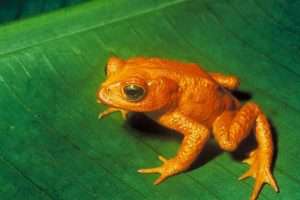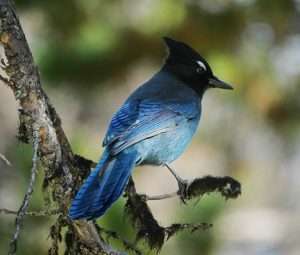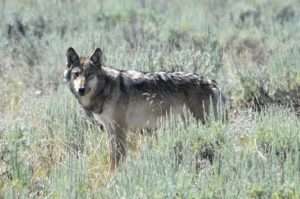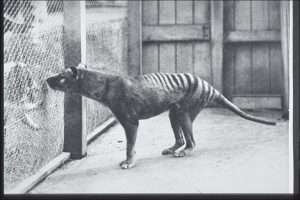
You’ve probably seen headlines about how we are currently in the sixth mass extinction that the Earth has seen (though recent evidence suggests a seventh that predates all other known mass extinctions.) Due to the relentless combination of factors we’re throwing at ecosystems around the planet–habitat destruction, pollution, soil degradation, and of course anthropogenic climate change–we’re seeing a severe increase in the rate of species extinctions. Experts aren’t in complete agreement about how accelerated the rate of extinction is compared to the normal background rate, but that doesn’t change the negative effects of each species that disappears forever.
The Basics of Biodiversity
Every ecosystem is made up of not only a habitat and the living beings that inhabit it, but the many interwoven relationships among these various beings and their home. Whether a given species requires food, shelter, safety, or the chance to reproduce, they cannot do so without their connections to other beings.
Let’s take a look at one of the most frequent visitors to my bird feeders, the Steller’s jay (Cyanocitta stelleri). When they aren’t nabbing peanuts and bits of suet, these omnivorous birds will gather a wide variety of food, including seeds, fruit, insects, eggs, and even small reptiles and amphibians. This means each Steller’s jay may depend on dozens, if not hundreds, of species just to get enough food throughout the year. Each species that is extirpated (goes extinct locally) means one less food source available to these birds. Since many of these foods are only available for a short time each year, the loss of even one or two can seriously threaten the jays’ ability to find enough to eat for the next several weeks or months until the next food seasonal source becomes available.
 Steller’s jays live in and near conifer forests in western North America; these forests may include pines, firs, spruces, and cypress (“cedars”), among others, as well as a whole host of shrubs, forbs, and other plants. They use these trees as safe roosts at night, and places to build their nests. A nesting pair of Steller’s jays will gather various twigs, conifer needles, moss, and other plant material to create each year’s new nest. Clearcut and bulldoze that conifer forest, and the Steller’s jays have nowhere to sleep, shelter, or nest. They are not as tolerant of human-dominated settings as their cousins the scrub jays (Aphelocoma spp.), so they can’t just move into the suburbs and cities.
Steller’s jays live in and near conifer forests in western North America; these forests may include pines, firs, spruces, and cypress (“cedars”), among others, as well as a whole host of shrubs, forbs, and other plants. They use these trees as safe roosts at night, and places to build their nests. A nesting pair of Steller’s jays will gather various twigs, conifer needles, moss, and other plant material to create each year’s new nest. Clearcut and bulldoze that conifer forest, and the Steller’s jays have nowhere to sleep, shelter, or nest. They are not as tolerant of human-dominated settings as their cousins the scrub jays (Aphelocoma spp.), so they can’t just move into the suburbs and cities.
Consider also that the Steller’s jay produces resources for other living beings. Raptors, bobcats, coyotes, and other predatory animals will eat both young and adult Steller’s jays. If a jay dies of other natural causes such as injury or disease, scavengers such as beetles, flies, and slugs benefit from this sudden gift of nutrients. As the remains decay, bacteria, fungi and other decomposers further release nutrients into the ecosystem, where plants can absorb them through their roots, and then pass them on to herbivorous animals. Even the bird’s feathers are created largely of keratin, a protein that is consumed by various insects and other invertebrates.
Finally, as predators upon both animal and plant prey, Steller’s jays keep these species from populating out of control. Part of why so many invertebrates have large clutches of young is because most will end up eaten by other animals, including birds. If there were no longer predators, all these young would grow up to adulthood and quickly cause an overpopulation crisis. Part of why invasive species are such a problem is because the places they’ve been introduced to lack those natural predators, and so the invader can reproduce unchecked.
We’ve just looked at one single species, and noted that it has connections to hundreds of other species, from animals to plants, fungi to bacteria. You can imagine a thin thread tracing from a Steller’s jay to each one of the other individual species that it has a relationship with. Now imagine that for whatever reason the jays go extinct in that area. All of those threads are suddenly severed, and drift down to the ground, useless.
This is what happens every time a species goes extinct, whether that’s local extirpation, or the permanent extinction of the entire species. Those threads can’t just be picked up by another species, because these relationships develop over thousands, if not millions, of years. And because it’s such a complex network involving hundreds of species, you can’t just plug in a similar species and hope it fills the niche in the exact same way.
Irreversible Extinction
 In the case of local extirpation or the total extinction of a regional subspecies, it is sometimes possible to reintroduce members of a population of the same species from elsewhere. For example, several subspecies of gray wolf (Canis lupus) have been hunted to extinction in North America, such as the southern Rocky Mountain wolf (C. l. youngi) and the Cascade Mountains wolf (C. l. fuscus). Between intentional reintroductions such as the 1995 release of gray wolves into Yellowstone National Park, and the natural dissemination of gray wolves from Canada into the western United States, other subspecies have successfully filled the niches left empty by the extinct subspecies. While the extent of the impact of wolves on these ecosystems is still being debated, what is apparent is that they’ve managed to pick up at least some of the threads left abandoned after the extermination of their subspecies counterparts.
In the case of local extirpation or the total extinction of a regional subspecies, it is sometimes possible to reintroduce members of a population of the same species from elsewhere. For example, several subspecies of gray wolf (Canis lupus) have been hunted to extinction in North America, such as the southern Rocky Mountain wolf (C. l. youngi) and the Cascade Mountains wolf (C. l. fuscus). Between intentional reintroductions such as the 1995 release of gray wolves into Yellowstone National Park, and the natural dissemination of gray wolves from Canada into the western United States, other subspecies have successfully filled the niches left empty by the extinct subspecies. While the extent of the impact of wolves on these ecosystems is still being debated, what is apparent is that they’ve managed to pick up at least some of the threads left abandoned after the extermination of their subspecies counterparts.
But this isn’t always possible. Sometimes the entire species is driven to extinction with no chance of a subspecies or distant population being brought in to ecologically pinch-hit, so to speak. Often we have little conception of just how much the loss of each species affects the rest of the ecosystem. But we can imagine all those delicate threads floating to the ground, never to be picked up again, leaving the remaining species with fewer connections to rely upon. Over time, if enough species go extinct, there are so many lost threads that the entire ecosystem can collapse. More species may disappear simply because the resources they need are no longer there. With enough time, the ecosystem may no longer be able to support life at all, or only a scant few species scrabbling for a foothold; desertification is a good example of this.
 When a species goes extinct, it can’t come back. The few stories of Lazarus species–those considered extinct that were then discovered to still exist–aren’t enough to bring back the thousands of species that have gone extinct just in the past couple of centuries. Daydreams of bringing back animals like the thylacine (Thylacinus cynocephalus) or woolly mammoth (Mammuthus primigenius) with genetic engineering have yet to bring forth any solid results, and even if we were successful in creating them physically there’s no way to guarantee that the species’ original behaviors and ecological relationships would remain intact.
When a species goes extinct, it can’t come back. The few stories of Lazarus species–those considered extinct that were then discovered to still exist–aren’t enough to bring back the thousands of species that have gone extinct just in the past couple of centuries. Daydreams of bringing back animals like the thylacine (Thylacinus cynocephalus) or woolly mammoth (Mammuthus primigenius) with genetic engineering have yet to bring forth any solid results, and even if we were successful in creating them physically there’s no way to guarantee that the species’ original behaviors and ecological relationships would remain intact.
Which means that in both the short term and long run, it’s best to preserve living species before they go extinct. Feel-good bullet point lists of “things you can do to prevent extinction” lists aside, it’s a very tall order. We have a LOT of entities–corporate, governmental, and otherwise–actively engaged in widespread activities that destroy habitats, add pollutants to the air, water, and soil, and contribute to climate change. Part of how we counteract what they do is by shifting our priorities. The idea that we can “just bring them back with DNA” has led many people to be less concerned about species going extinct, when what we need is more concern, and more pressure to create the sort of change necessary to curb environmental destruction. An attitude shift may not seem like a big thing, but perspective informs actions, and even small actions can add up to enough to keep a species from disappearing entirely.
